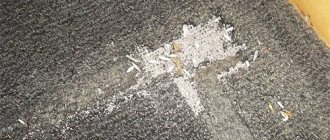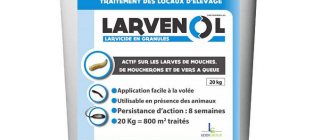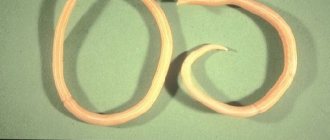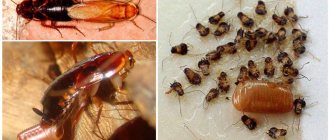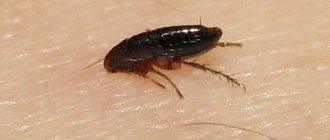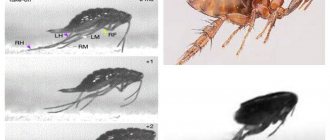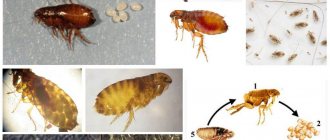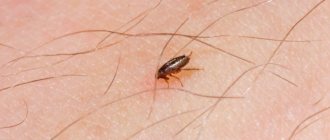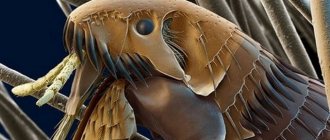Creating a temperature regime that is unfavorable for fleas is an effective method of pest control. Frost less than -45 °C is the temperature at which flea eggs and adults die.
- Habitat Features
- Critical temperatures for different types of fleas
- Effect of cold
- Exposure to heat
- Temperatures are lethal for flea eggs
- How to choose the optimal temperature to kill fleas
- Destruction of insects and their larvae by various methods
- Using a steam generator against insects
Habitat Features
A comfortable habitat for parasites is human housing. They grow and reproduce in moist places, hidden from sunlight. Pests seek out accumulations of debris to settle there and reproduce.
The optimal environment for survival differs depending on the type of parasite. Insects living on the fur of cats and dogs grow and reproduce at temperatures from 20 to 25°C. Peak functioning of animals occurs in the spring and summer. For parasites living in the basement, a comfortable temperature is 14-15°C. Optimal air humidity is 80% and above.
Parasites that reproduce during hot periods have a harder time withstanding frost. Pests living in the basement are less able to withstand the heat. Basement fleas are more resistant to physical impact. To destroy them, the animal is heated above 50 °C with thermal devices - this is the temperature at which adult basement fleas and their eggs die.
The average lifespan of animals is 2-3 months. This period depends on living conditions. During her life, the female lays 500 eggs, which is why the colony increases dramatically.
Increasing the ambient temperature to 35°C reduces the insect development cycle by 30%. Adults are larger than their predecessors. A decrease in temperature leads to a slowdown in development up to 1 year, and the pests grow smaller in size.
Lifespan of fleas
Since it is difficult to see a dead flea on a pet without using insecticides, these insects seem to be able to live indefinitely. This is wrong. However, the duration of various stages of the life cycle of these insects can increase significantly under unfavorable conditions.
If there is a food base
Usually fleas live no more than 2-3 months. During this time, under favorable conditions, males and females perform their biological function and die. Life expectancy is inversely related to the rate of reproduction. Therefore, it is clear that the more favorable the conditions, the shorter the life cycle and the more offspring are born per unit of time. High temperatures significantly reduce the lifespan of these insects. In summer, at temperatures above 35°C, they live no more than 3-4 weeks.
Under conditions of starvation
Without blood, fleas can live up to one and a half years. This applies to adult insects, as well as eggs and pupae. The larvae are the most vulnerable stage of the life cycle; they suffer greatly from hunger and die quickly if they have nothing to eat. Remaining viable in the absence of food, fleas lose their ability to reproduce.
When figuring out how long fleas live without an animal, you should take into account how favorable their other living conditions are. High humidity and temperature can support the life of these insects for up to one and a half to two months. Low temperatures extend the life of pupae and eggs to several years.
Critical temperatures for different types of fleas
Changing the temperature regime is more effective than using insecticides. A thin stream of spray may not reach the small larva. And unfavorable living conditions kill animals.
Such types of fleas as cat and dog fleas are similar in their structure and vital functions. Therefore, pet parasites are killed in the same ways. Pests are not resistant to frosts less than -10°C, at which the reproduction process slows down.
If the cold reaches -15°C, animals freeze within 1 hour - this is the temperature at which dog and cat fleas die.
Sand insects are the smallest animals of their family and cause a disease called sarcopsillosis. Due to their small size, it is difficult to exterminate all individuals with insecticides. Therefore, it is necessary to know whether sand fleas are afraid of frost.
Animals are distributed in hot regions: India, Central and South America, Africa. Representatives of this type of flea like to live at high temperatures (30-40°C). Sand fleas die at low temperatures: less than -5°C.
It's not just frost that parasites fear. Heat and sunlight interfere with the reproduction and growth of insects. When the air is heated to 45°C, the condition of the animals deteriorates sharply - this is the temperature at which adult fleas and their larvae die within half an hour. The temperature for instant death of fleas is +50°C and above.
What are fleas afraid of at home?
It is known that fleas are afraid of strong smells. It terrifies their nervous system, causing paralysis of individual parts. Because of this, fleas cannot move and then die. When the concentration of insecticide is strong, death occurs very quickly, within a few tens of seconds. If an insect hears an odor that is unacceptable to it, it does not jump onto the victim from which it comes. When the floors in an apartment are treated with bleach, dust, vinegar, or a strong-smelling detergent, blood-sucking insects try to retreat from such a room.
Are fleas afraid of water?
Fleas are not afraid of ordinary water (without a special smell). They are afraid of water, which leads to suffocation. When the owner washes his pet with water in a basin, even without using a special shampoo, the bloodsucking animals die in the water. And treating rooms with water (frequently washing floors, spraying corners with water) will not lead to successful results. Water flavored with an unpleasant odor for fleas will repel or paralyze parasites.
Are earth fleas afraid of frost?
Earth fleas react sharply to changes in environmental temperature, especially towards cold. At low temperatures (from -10 degrees), females stop laying eggs, and new fleas do not emerge from the cocoons. Cold with a temperature of -15 degrees. becomes critical for the “flea horde.” Insects try to leave such premises. In cold weather, females are not able to lay eggs; the cocoons lie undeveloped. That’s why many owners “freeze out” barns and chicken coops, leaving them to air out in frosty weather.
Are fleas afraid of tar soap?
Tar soap with a special smell is not liked by bloodsuckers in any form. Floors washed with it repel parasites. True, people don’t really like this smell either. A dog or cat washed with tar soap will remain for some time without parasites, their larvae, and eggs. In this case, you need to wash the bedding where the pet sleeps with water and tar soap or bleach. To completely get rid of parasites, the procedure of bathing with a strong-smelling cosmetic product must be repeated.
Effect of cold
Animal parasites function in the warm season, when the air is heated to 15-25°C - this is the temperature at which fleas live. If the thermometer drops below 0°C, pests will feel discomfort. They are unable to produce offspring.
The slowing down of vital processes begins at -5°C. During periods of frost from -10° to -15°C, they fall into suspended animation. This is an analogy to hibernation in mammals. Colds greater than -15°C are fatal to all types of animals. In such conditions, adult individuals die in 25 minutes - 1 hour.
Exposure to heat
Disruption of insect activity begins at +30°C. When the air warms up to this level, pests begin to feel discomfort; they run into the basements and hide behind furniture.
At a temperature of +50°C, metabolic processes in the animal’s body accelerate, and death occurs within 20-30 minutes. +70°C is more dangerous for insects - this is the temperature at which fleas die and their eggs die in 1 minute.
Temperatures are lethal for flea eggs
A prerequisite for exterminating pests in the house is the destruction of eggs. Their diameter is up to 1 mm, so it is not possible to destroy all eggs at once with an insecticide.
They are destroyed by frost and heat. Eggs die faster at high temperatures. When exposed to +50°C or more, insects die almost instantly.
To kill parasites with frost, it is necessary to apply cold temperatures of -20°C. It takes two days to destroy all the flea eggs.
How to choose the optimal temperature to kill fleas
To eliminate parasites on clothes, towels, toys and other fabric products, they are washed at a water temperature of +50°C and above. Subsequent treatment with a steam generator is effective.
An effective method to get rid of parasites living above and under furniture, in floor crevices and other hard-to-reach places in the house is freezing. In winter (January-February), open all the windows in the house wide open and leave for 2-3 hours. After this, general cleaning is carried out. The main condition is that the temperature outside should be less than 0°C.
What are parasites afraid of?
Can you kill a flea with water? There is a simple answer to this question - you can. People who keep pets, such as cats or dogs, often see bloodsuckers trying to leave the animal's fur while bathing. They jump into the water and drown because they are not adapted to swimming. Fleas are afraid of water, and this can be used to control them.
If you regularly wash a pet that has these insects, you can dramatically reduce the number of fleas living in the fur.
If insects are infested on clothes, then, as mentioned above, they can be eliminated by washing in hot water. But you can kill insects with cool water, if you take into account one nuance. In order to get rid of bloodsuckers with a 100% guarantee, you need to completely immerse all things in water. Only in such conditions will the insects die, since they will not have enough oxygen, although some of the eggs may survive in such conditions. Therefore, it is advisable to wash things in hot water.
Destruction of insects and their larvae by various methods
Before fighting pests in an apartment, eliminate the source of infestation. Pets cannot be affected by physical methods (cooling or heating). Chemical preparations - insecticides - have been created for them. They are designed for cats, small and large dogs. Only after treating the animal do they begin to eliminate parasites in the room.
Fleas and extreme temperatures (-50°C and +70°C) do not mix. The following methods are used to get rid of parasites:
- airing carpets, bed linen and clothes in the cold for at least 2 hours;
- washing things in a washing machine with hot water (+90°C);
- ironing the fabric on both sides at the highest temperature;
- summer airing of mattresses, upholstered furniture, bedspreads, bedding in direct sunlight for 3 or more hours;
- pouring boiling water into cracks on the floor and baseboards;
- use of steam generators and thermal guns.
The least effective way is to wash things in a machine. It is used only in combination with other methods. Another drawback of the method is that not all items can be washed at high temperatures.
The most effective method of fighting insects is a steam generator, thermal gun or steam cleaner. These devices heat the individual to +90°C - this is the temperature at which adult fleas and larvae in the apartment die.
In addition to quickly suppressing the vital activity of insects, the physical method of control has another advantage. This method is harmless to human health, unlike insecticides.
Man and fleas
Unlike head or pubic lice, fleas avoid human contact. The parasite can linger on clothing for a couple of days and periodically attack its owner, but the insect’s natural habitat is animals with widespread hair.
Under artificially created conditions, fleas have demonstrated the ability to live on human blood. But in the natural habitat this is rare. The parasite is too large to reproduce safely on human skin. And it is much more convenient for him to move on fur than on a bare or bristly surface.
It is extremely unlikely that fleas will reach a person's head. The most they can do is jump to ankle level. And as soon as the pest begins to move higher, the person will immediately feel it. Once on the skin, a flea simply bites, drinks blood and tries to leave the uncomfortable place as quickly as possible. The bite can be compared to a mosquito.
Using a steam generator against insects
An effective way to destroy parasites on clothes, linen, and furniture is a steam generator. This device emits a stream of hot steam. They are used to spot treat areas where parasites are supposedly hiding. The steam is kept for 3-4 minutes, waiting for the death of the animal.
The device emits a jet with a temperature of 90°C. This temperature regime is detrimental to adults and larvae. Steam humidity is 5%. Therefore, things that deteriorate due to high humidity will not be affected.
Different types of steam generators differ in their power. Sanitary and epidemiological services operate high-power devices. They destroy all parasites in the apartment in 10-15 minutes.
The advantages of this method of pest control are getting rid of pests in hard-to-reach places. The steam generator is convenient for treating baseboards, corners of rooms, and cracks.
Physical exposure is a fast, effective and safe method for humans to combat annoying parasites. High and low temperatures are harmful to animals.
Strong odors from fleas
Insects cannot tolerate many strong odors, so the answer to the question of whether fleas are afraid of bleach will be positive. To combat insects, it is necessary to wash the floor and baseboards with an aqueous solution of bleach.
Considering the danger of the product, flea bleach should not be applied to an animal’s fur under any circumstances.
Camphor alcohol against fleas has a similar effect, only its vapors are not dangerous to humans or animals. Therefore, its drops can be applied to the pet’s fur. It will be better if the dog or cat cannot lick the product.
Science and production do not stand still, inventing new drugs to combat parasitic insects. Fleas in cats at home are afraid of the following:
- collars;
- special drops applied to the withers;
- sprays sprayed onto a cat's or dog's coat;
- shampoos for cats, dogs;
- powders, powders, tablets.
These drugs are made on the basis of various inclusions:
- Dichlorvos, Karbofos, DDT, Chlorophos;
- Pyrethrins and pyrethroids are low-toxic insecticides for warm-blooded animals of natural or synthetic origin, but unacceptable for blood-sucking animals;
- Fipronil and Imidocloprid are the newest drugs that are harmless to humans and animals and cannot be tolerated by parasites.
We suggest you familiarize yourself with: Rat Control Service
Phenothrin, Permethrin, Cypermethrin, Etofenprox, Deltamethrin are low-toxic insecticides. They are included in Raptor, FAS products, Klopomor, Medilis-Tsiper, individual anti-parasite collars, Bars drops, Tsipam, Sentry, and various sprays.
Fipronil and Imidocloprid are considered harmless to mammals, but deadly to parasites. Such substances are included in drops and sprays Frontline, Hartz, Bolfo, Advantage, Biafar, Barrier, Hartz collars, Mr. shampoos. Kiss, Rolf Club.
A “flea invasion” can be scared away with the help of herbs, plants, fruits, and products. Blood-sucking insects are afraid of the smell:
- tansy herbs;
- wormwood;
- mint;
- eucalyptus;
- geraniums;
- carnations;
- chamomile;
- lavender;
- thyme or other herb.
These herbs can be placed under the carpet on the floor, placed in corners, hung around the room, placed in bouquets, or made into ikebana. When considering what smell fleas do not like, it should be remembered that parasites do not like the smell of essential oils, bay leaves, citrus fruits, juniper, pine, spruce, and walnut leaves.
Blood-sucking insects are afraid of the smell of bleach and whiteness. This smell blocks their nervous system and paralyzes movement. Sometimes the parasite manages to escape from such an aroma, but most individuals die. Floors washed with the addition of bleach provide good disinfection of the room. In addition, you need to wash the animal's bedding and bedding with the addition of white. Washing vacuum cleaners help a lot.
